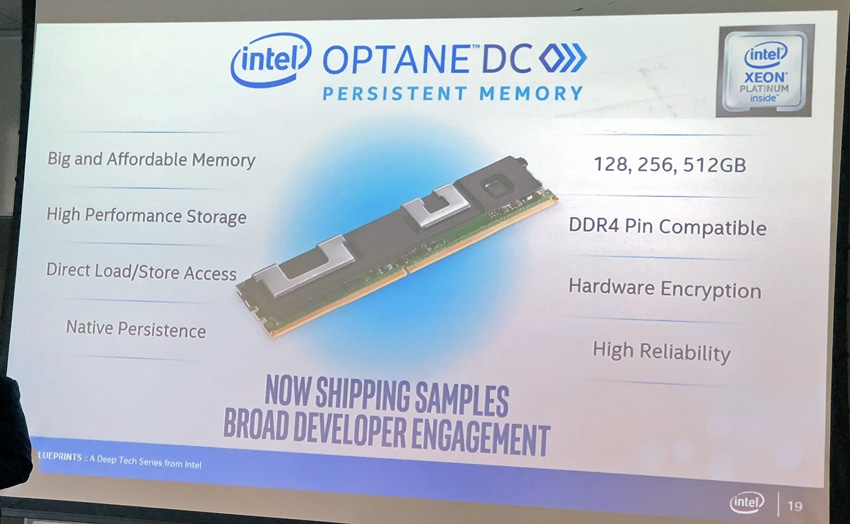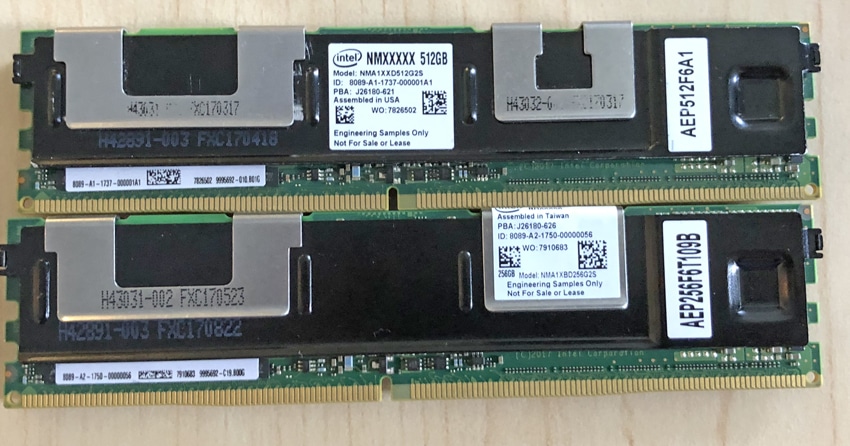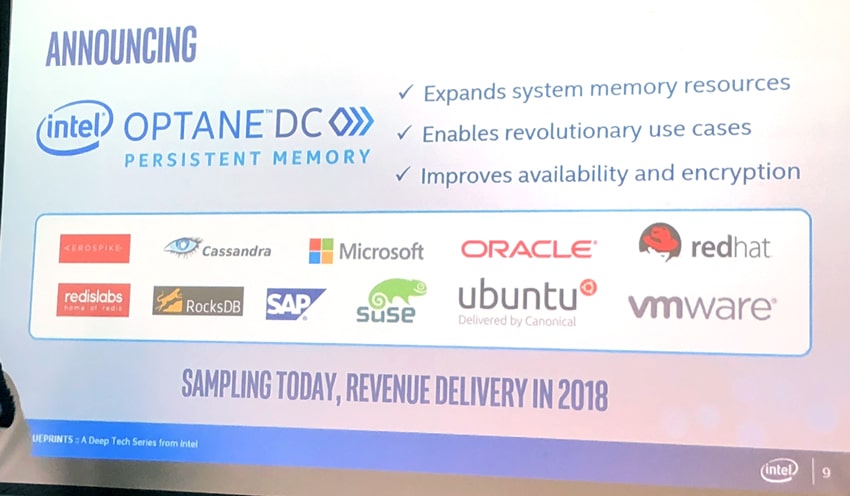
Today at its Memory Storage Event, Intel announced the release of its new Optane DC persistent memory (PMEM). Instead of a tweak on an existing technology such as new interfaces or different NAND, this is a new class of memory. Intel makes the bold claim that this could reimagine the data center memory and storage hierarchy, a claim that could be proven true.

As all of us have heard, and we have certainly written about many times, data is growing at a massive rate. Not only is the volume of data expanding, the benefits of analyzing said data can lead to new business insights or even societal advancement or scientific discovery. The industry as a whole has been fairly good about tackling the influx of data but there are new limitations emerging. Ways of storing the data emerge but the bottleneck is jockeyed around on how to quickly analyze the data. Intel intends to address this issue now.
Intel Optane DC persistent memory is a new class of memory and storage designed for the data center. It sits between DRAM and PCIe-based storage. Optane DC persistent memory comes in much higher capacities, better affordability, and better persistence than traditional DRAM. The new memory will be available in capacities up to 512GB per module bringer over 3TB per CPU socket translating to more data near the processor for even better latency.
Benefits include:
- Cost-effective, large-capacity in-memory database solutions
- Greater system uptime and faster recovery after power cycles
- Accelerate virtual machine storage
- Deliver higher performance to multi-node, distributed cloud applications
- Offer advanced encryption for persistent data built into the hardware
The benefits of this technology can have significant impacts on several operations in the data center. Intel gives the examples: for planned restarts of a NoSQL in-memory database using Aerospike Hybrid Memory Architecture, Intel Optane DC persistent memory provides a minutes-to-seconds restart speedup compared to DRAM-only cold restart. On memory-intensive workloads such as Redis IMDB server, Intel’s persistent memory enables higher memory capacities, delivering more server instances at the same service level agreement (SLA) performance when compared to a system configured with just DRAM.
Years in the making, Intel has been working with a broad ecosystem to both streamline adoption and creating a new generation of applications and services. The company is also offering developers remote access to systems equipped with Intel Optane DC persistent memory through its Intel Builders Construction Zone to help develop new software and testing.
Availability
Intel Optane DC persistent memory is sampling now with broad availability expected in 2019.
Sign up for the StorageReview newsletter


